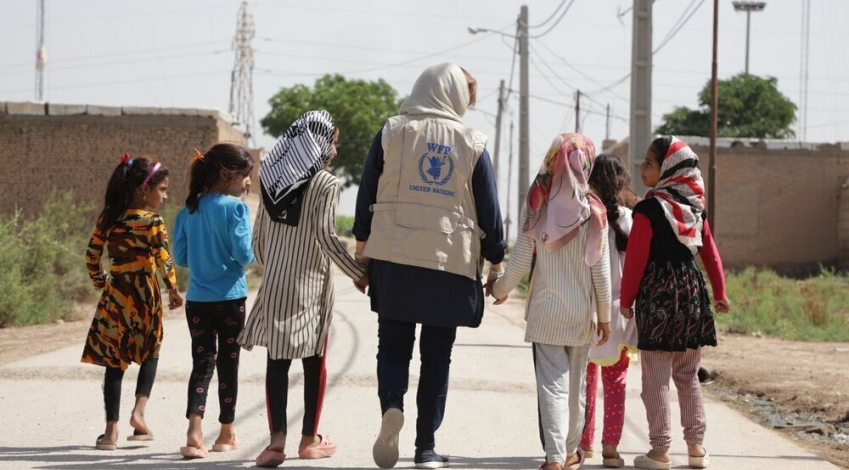Tuesday 31 January 2023 - 17:30
Story Code : 403764
WFP supports more than 32,000 beneficiaries in Iran
In December, WFP reached 32,699 beneficiaries including 32,082 refugees and 617 Iranian teachers as per the monthly target under unconditional resource transfers (URT), of whom 9,168 were women, 9,415 men, 6,737 girls, and 7,379 boys.
The refugees were assisted with a total of 400 MT of fortified wheat flour (9 kg per person per month) and vegetable oil (900 cc per person per month).
WFP provides cash assistance to 7,197 Afghan and Iraqi refugee households each month. In December, a cash amount of Iranian Rials (IRR) 1,200,000 (US$ 4.1) per person per month was distributed to households headed by refugee women and IRR 1,000,000 (US$ 3.4) per person per month to households headed by refugee men.
In December, WFP distributed school meals consisting of milk and biscuits in all settlements, reaching 8,736 students and their teachers.
Moreover, it provided 2,770 refugee girls with a cash incentive of IRR 500,000 (US$ 2) transferred to their bank accounts.
This is part of WFP Iran�s efforts to promote education for refugee girls by providing them with cash for each month of regular school attendance.
On 13 and 14 December, Iran Country Office organized a two-day workshop in Tehran for its
government counterparts from the Bureau of Aliens and Foreign Immigrants Affairs (BAFIA) of the Ministry of Interior.
More than 60 BAFIA personnel from the field and Tehran gathered in an interactive forum and had the opportunity to learn about upcoming changes to the program under the next Interim Country Strategic Plan (2023-2025) and other topics such as beneficiary management, monitoring, reporting, and food storage and distribution.
In November, WFP provided 2,312 refugee girls with a cash incentive of IRR 500,000 (US$ 2) transferred to their bank accounts.
That was a part of WFP Iran�s efforts to promote education for refugee girls by providing them with cash for each month of regular school attendance.
In the summer of 2022, the Norwegian Refugee Council and WFP joined hands to boost the capacity of the Bardsir settlement bakery in Kerman with NRC constructing a new building and WFP purchasing new bakery equipment to increase the bakery�s production.
In parallel, more households reported using short-term coping strategies, compared to 2021, resorting mainly to �reducing the portion size of meals�, �borrowing food� and reducing food quantities consumed by adults.
Around 80 percent of interviewed beneficiaries continued to prefer a mix of in-kind and cash assistance, as in 2021. In-kind only remains the least preferred assistance modality since 2019.
WFP Iran works under its Interim Country Strategic Plan (2018-2020) extended until the end of 2022 to align it with both the United Nations development assistance framework (2017�2021), which has been extended for one additional year, and the National Development Plan (2016�2022).
The new ICSP for 2023-2025 is also under development. WFP assists 32,000 beneficiaries yearly through unconditional food assistance, in addition to the provision of a girls� education cash incentive, and a school feeding initiative consisting of nutritious school snacks.
The Iranian Ministry of Foreign Affairs and the Bureau for Aliens and Foreign Immigrants Affairs (BAFIA) are the main cooperating partners of WFP in Iran. BAFIA is responsible for coordinating all matters related to refugees and international agencies.
Bi-annual meetings take place between BAFIA, UNHCR, and WFP. Monthly operational coordination meetings are also held to monitor the refugee situation and discuss appropriate response actions.
By TEHRAN TIMES�
# Tags











